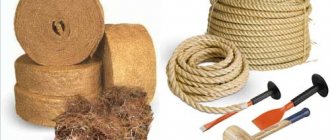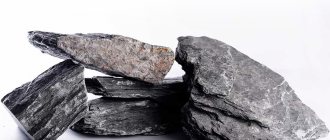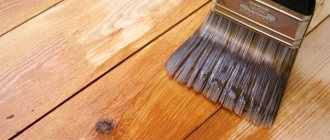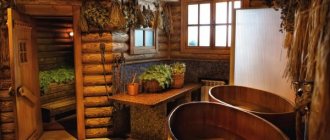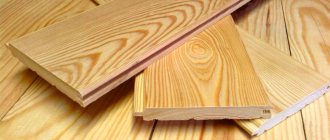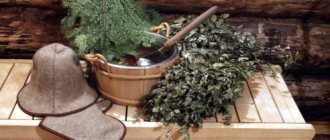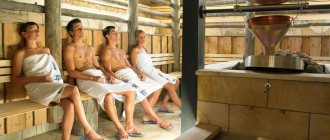Types of stones for baths
Let's start with a simple division: some steamers simply pick up stones, others pay money for them. Let's start with the first category.
So what can you bring home for free? Firstly, natural stones , secondly, artificial materials . Of the latter, they most often look for and bring broken power line insulators . Well, someone can look for suitable hardware - stainless steel or cast iron (although the latter is not suitable for every brand). This means that natural stones remain.
Usually they are looked for either in a field or on the bank of a river (preferably a mountain one). Since it is impossible to predict which stones will be found in a particular area, suitable samples have to be selected at random.
IMPORTANT! It is desirable that the selected stones are strong, do not break when hit by a 5-kilogram sledgehammer, and the sound is clear, as if hitting metal. It is better to have smaller crystalline grains, so much so that the texture appears uniform.
It is usually advised to heat the brought samples over a fire and then throw them into a bucket of water.
IMPORTANT! We do not recommend picking up granite fragments - they are not suitable for your purposes.
As for purchased stones, the names are usually written on the boxes and buckets.
True, it often happens that sellers deceive, they put the wrong stones that are written on the label, so you need to be able to distinguish between a good, correct stone and a low-quality one, or something else altogether.
You will read some tips below. Purchased types of bath stones can be divided into three price categories: expensive, mid-priced, and cheap. Don’t be surprised, but the low price speaks more about the prevalence and ease of extraction than about the quality of the stone.
The most expensive are semi-precious stones, which, of course, do not end up in the bathhouse in jewelry quality. These are jade, jadeite and jasper. The choice of the latter is not entirely clear, because in essence, this is the same quartzite in composition, it is better to take crimson quartzite - it will cost less and is more beautiful than brown jasper.
The cheapest would be gabbro-diabase - it has good characteristics, but there is a lot of it, and it is often used in construction, for laying roads, for example. In a quarry, it generally costs pennies ( other stones are also 50 times cheaper if you take them from a quarry ).
All the others, which you will soon meet, are in the middle price category, some a little more expensive, others cheaper. Chromite is still a strategic raw material, so it's hard to say what traders are actually offering.
In addition to natural fillers for the heater, you can also find artificial ones on sale - these are ceramic balls, cast iron balls , the same power line insulators, if you buy them at the factory, stainless steel balls. In general, metal or ceramics. Often they are taken to be mixed with stone, improving heat transfer or protecting the upper layers from the destructive effects of fire.
Properties of jadeite
Jadeite is a semi-precious stone, from which in ancient times amulets and elements that adorned the ruler’s throne were made. This is a popular type of stone for steam rooms. Jadeite slowly releases heat, maintaining a constant temperature in the room. This stone has the following characteristics:
- strength;
- high quality;
- ability to retain heat;
- heat resistance;
- durability.
Frequent heating does not lead to the formation of chips and cracks due to the dense and homogeneous structure. This stone is used in steam rooms because it almost does not absorb water. But jadeite is used for baths not only because of its characteristics as a mineral rock. This stone is endowed with healing properties. His ability is noted:
- normalize blood pressure;
- have a beneficial effect on the functioning of the heart and blood vessels;
- positively influence potency and nervous diseases;
- participate in the dissolution of salt deposits;
- treat diseases of the genitourinary system, rheumatism.
If the stove is intended to use more than one type of rock, jadeite is placed on top. This will allow you to get the greatest effect from its healing properties.
Bath stones: names
Since in the next chapter we will compare those characteristics that are most important in a steam room, this chapter will present only the names of the stones for the bath and their brief descriptions. Note that for the most popular types we have separate large articles that are worth reading (see the list of articles at the bottom of this page), because in them we do not repeat the advertising hype for the thousandth time, but provide facts, objective characteristics, and explain why one stones have a place in the bathhouse, but others do not.
IMPORTANT! There is one unpleasant thing that accompanies not all, but many stones - sulfides . The stones themselves do not smell, but if they contain an admixture of sulfides, the latter oxidize from the heat, turn into oxides, and these form acids with water, in particular sulfuric acid. A foul odor and burning sensation in the eyes and throat are a sign of sulfides. We have repeatedly taught them to identify and not take such stones. Look at articles about gabbro-diabase, dunite and other stones.
Bath stones: Basalt
This is erupted and solidified lava . The rock with this name is classified as basic (alkaline). ultra-basic ones are most suitable for baths
Cenotype varieties are dolerite, anamesite, basalt. Paleotype - diabase.
Basalt for baths
The physical and mechanical properties of basalts vary widely, depending on the conditions of crystallization and gas saturation of the lava. Porous basalt stone is not suitable for a bathhouse . But varieties such as dolerite and diabase can be used.
White quartz
White quartz is far from the best choice among bath stones. It is quickly destroyed, and the ability attributed to it to ozonize the air and rejuvenate the skin is too exaggerated. You can read in detail about the properties and capabilities of white quartz in the article dedicated to it and crimson quartzite.
Gabbro-diabase
A good bath stone, and also inexpensive . If you buy a batch without sulfides, then there will be no odors or other unpleasant sensations. And you will learn how to choose the right gabbro-diabase from the article about its properties, selection rules and use in the bathhouse.
Bath stones: Karelian granite
People ask a lot about granite stone for baths, in particular about Karelian granite. In fact, there is no difference in where exactly this or that granite is mined, because such stones are completely unsuitable for a bathhouse.
In order not to return to this topic in the future, we will explain the reason for such a harsh verdict. The fact is that any granite consists of certain minerals, in particular mica, quartz and feldspar. They all expand differently when exposed to high temperatures.
And when the expansion is unequal and multidirectional, stresses arise inside the stone, which will result in rapid destruction. Therefore, the best use of granite remains construction finishing, making monuments and the like, where it is not subjected to high temperatures.
Another problem with granite is the frequently encountered increased radioactivity of samples. The reason for this is the place of formation of granites - they crystallize in the earth’s crust, that is, in the upper layer of the earth’s shell, where, among other things, radioactive elements accumulate.
Dolerite
Above, when describing basalt, we already said that this is one of its varieties. In principle, you may well find “dolerite, bath stone” on sale; its properties, as well as its composition, will be identical to another bath stone, which is found on the shelves much more often: gabbro-diabase.
Dolerite (photo source https://k-grupp.ru/)
For those interested in dolerite, we recommend reading a large article about gabbro-diabase, which explains the reason for the different names and describes in detail the properties of the stone, especially for baths (see link above).
Dunit
Another stone about which we have prepared an informative article. Dunite belongs to rocks of plutonic origin, that is, it is formed at great depths, where high temperatures and pressures act.
Dunit.
By Pikarl at de.wikipedia, In this it is similar to jadeite, which belongs to the same class, but differs in its high silica content. The fact that dunite is sold at a price much lower than jadeite only speaks of its greater prevalence. Our advice: dunite is suitable both for filling the bottom of the heater and as the only filler.
Jade
Jade
He is not just a legend, because a lot, in fact, turns out to be true. This is a really good option for a heater. But this is a breed that rarely appears on the surface, and therefore is not cheap. On the other hand, it also has disadvantages.
Compared to jade, jadeite is less resistant to open fire , so they try to protect it from fire and put it on top. However, find out the secrets of jadeite yourself - from the article about it on our website.
Bath stone: coil
Well, our review would not be complete if we did not talk about such a stone for a bath - coil or serpentinite , the properties of which are not at all suitable for it, but at the same time this does not prevent many companies selling stones from selling it to uninformed people by advertising non-existent qualities.
Coil for oven
Serpentinite is a rock that results from the replacement of minerals in the weathering crust of ultramafic and mafic igneous rocks. In addition to the mineral serpentine in several crystalline modifications, carbonates, amphiboles, garnet, talc and olivine, as well as impurities of minerals that usually make up metal ores, can be found in serpentinite.
IMPORTANT! This has been said more than once, but we will repeat it for greater reliability: steel is harder than a coil, so it is easy to identify it by scratching questionable stones or veins with a knife or other steel object.
Bath stone: serpentinite
The fact that serpentine is obtained from basites and ultrabasites makes it a natural companion of these rocks . Namely, they, ironically, are best suited for a bath. The replacement process is called " serpentinization ". It may also be incomplete.
And so, when you buy stones, it may well turn out that they were chosen from a serpentinized area, that is, you, it seems, are selling what is written on the label, but in an altered and unusable state.
This is especially offensive for those who buy jadeite or jade, because the coil is not worth that much money, and it will have to be changed quite quickly. Keep in mind that the stone you buy may have serpentine veins - this will reduce its strength!
Attention! The danger of buying serpentinite out of ignorance awaits buyers of any green stones for a bath. After all, this is the main color of the coil, but it can also vary, for example, a dark gray coil is possible.
By the way, the chemical composition of serpentine and serpentinite differs in that the first is a hydrous silicate of magnesium oxide, and the second is magnesium. This is not a big deal for the heater. Is it just that coils from different deposits have different strengths?
IMPORTANT! We do not recommend coil/serpentinite as a bath stone, the properties of which are such that it cannot withstand high temperatures, quickly begins to lose chemically bound water, becomes porous, and eventually turns into talc or powder.
And yet, serpentinite is not completely barred from entering the bathhouse. It can be used. But only as a facing material. The good news: it looks great, and you can tile not only the walls, but also the stove itself. The main thing is that there are no cracks on the tiles when purchasing.
Bath stone: coil - cladding
Raspberry quartzite
Usually the story about crimson quartzite begins with Napoleon's sarcophagus, but what's the use of this for steamers? Is this stone good for a bath? Yes, without a doubt, it is worth taking not for its beauty (or not only for its beauty), but primarily because it has good characteristics of heat resistance and heat capacity. And it will last longer than the same quartz - which we already wrote about in the article about crimson quartzite and quartz.
Nephritis
If there is a “throne room” in the kingdom of bath stones, then there will be two brothers on the throne: jadeite and jade. Identical in composition, they differ greatly in structure. And jade has a stronger structure because it resembles crystalline felt. Jade tolerates temperature changes more easily, gives off heat longer and heats up faster than jadeite, but it is more expensive. Of course, they can offer you a cheaper one, but it is unlikely to be real. If you want to know how to distinguish genuine jade, read the article about it.
Peridotite for bath
This is not the name of a single rock or mineral, but of a whole family of rocks containing pyroxene and olivine in different proportions. The reason why this name can be found on sale is the great similarity of properties between the breeds included in this family. In the article about dunite, we already said that in a box with “peridotite” you can find harzburgite, lherzorite, dunite, wehrlite and other representatives of pyroxene-olivine rocks.
Peridotite.
Photo from Wikipedia Peridotite is suitable for a bath - these are ultrabasic plutonic rocks that are characterized by heat resistance , that is, they can withstand many heating-cooling cycles. You just need to know that olivine, when it comes to the surface, undergoes serpentinization, and this makes it unsuitable for a bath. Such stones will lose chemically bound water and quickly deteriorate. Therefore, you should always carry out a simple check for the presence of serpentine - it is easily scratched with a knife.
Porphyrite
Porphyrites are rocks of different mineral composition, but with a similar structure, which is called “porphyry”. The easiest way to describe it is like a raisin loaf—the crystals that form will be the “raisins” and the rest will be the “dough.” During geological processes, both the “raisins” and the “dough” are often replaced by other minerals. Therefore, it is difficult to talk about any specific porphyrite without analyzing its composition.
You can learn more about porphyrite and its properties from the article dedicated to it.
Bath stones: rodingite
Again, as with peridotite, we are not dealing with a single rock, but with a whole family of calcium-silicate rocks resulting from the replacement of pyroxene and plagioclase by garnet. Rodingites arise in approximately the same conditions as jade, but at the same time they have a different mineral composition and structure from it, in particular, they are characterized by a low content of silica and an increased content of calcium oxide.
Bath stones: rodingite
Among those who have used rodingite for baths, the reviews are usually positive, unless, of course, this rodingite was sold to them as jadeite . After all, it is significantly inferior to the latter, and this becomes clear only in the bathhouse. The physical and mechanical properties of rodingite are such that it can be classified as a medium category stone suitable for a heater.
Soapstone chlorite
Soapstone - photo
Gray, as if sprinkled with powder, “soapstone”. There is no need to guess about its suitability for a bathhouse - there is a lot of advertising of soapstone, especially imported, Finnish ones. They put it in the stove, and line the stoves with it, and decorate the walls. We have two articles - about soapstone as a heater filler and about tiles made from this stone, including for finishing stoves. It has both undoubted advantages and inevitable disadvantages. Read, there should be enough food for thought.
Chromite for baths
Despite the fact that many companies selling stone offer chromite for baths, this looks quite doubtful, because real chromite is subject to accounting, because the chromium needed by the industry is extracted from it. Therefore, what exactly is sold in each specific case should be clarified with specialists. (Here, however, it is worth noting that when chromite is mined from river gravel, it is no longer subject to violations of the law. Therefore, it is still worth describing it.)
The more the chromium has oxidized, the more weathered the rock is, which means that the greenest stones will fall apart the fastest in the kiln. Better are those that have a metallic sheen.
Chromite is very good for a bath, it is denser than jadeite (which means it has a higher heat capacity), tolerates temperature changes well, and does not crack. But this applies to the chrome spinels that make up the rock. And besides them, there are a lot of other things in ore, so when taking it as a filler for a heater, you just need to check it for strength with a knife. See also a review with a question from our reader whose chromite fell apart.
Bath stones: jasper
This is a rock based on quartz, or more precisely, silica (SiO2). It is formed in two completely different ways : in the first case, it is a sedimentary rock composed of the remains of siliceous skeletons, for example, diatoms, which subsequently underwent partial melting and recrystallization, in the second case, it is a product of alteration of various rocks under the influence of hot mineral waters.
Jasper. Photo from Wikipedia
Jasper for a bath is most often a sealing wax variety, that is, a plain, brown-red jasper,
the properties of which are similar not so much to white quartz as to quartzite, which means it is more suitable for use in a steam room than quartz. Its structure is cryptocrystalline, which indicates good heat resistance .
However, most buyers take it for its status as a semi-precious stone and for its promised “medicinal properties.” We continue to adhere to the opinion that the best stones for a bath are those whose properties can be somehow measured in order to select the most resistant, heat-intensive types, and let specialists handle the treatment.
Well, it would be nice to compare all those bath stones whose names are given above.
Rodingite rock
Rodingite is a metamorphic rock formed as a result of alteration of igneous deep rocks. The stone contains:
- feldspar;
- amphibole minerals;
- pyroxenes;
- precious chromium-vesuvian;
- pomegranate.
Rodingite is classified as a strong rock with a delightful bright color. Place of extraction: Middle Urals. The stone has an insignificant coefficient of thermal expansion, it is difficult to break down and wear out, so its service life is long. Due to its increased strength, it is not changed for a long time. Microparticles of the rock, in contact with hot water, impart healing properties to the steam.
Choosing stones for a bath
Before we begin choosing stones for a bath, let's first name the qualities that they should have. Nobody wants to go through the heater every month, which means they shouldn’t deteriorate quickly (the fact that sooner or later destruction awaits any rock is beyond doubt).
Destruction depends on the thermal stability of the sample, on its ability to withstand cycles of heating and cooling. What breeds are best suited to this? — Those that were formed at great depths, at high temperatures and pressures. This is fully applicable to the class of plutonic rocks (the deepest lying igneous rocks), to a lesser extent - to volcanic rocks , because when they form, an amorphous structure often appears, that is, volcanic glass, which will be fragile.
Metamorphic rocks are sometimes stronger than their igneous counterparts - we know this from the example of quartzite and quartz. But sedimentary rocks are too weak to withstand heating, even if they are a product of the breakdown of igneous rocks.
The second important quality is heat capacity . In practice, a high heat capacity means that the stone will continue to give off heat for a long time after heating has ended. Heat capacity depends on the structure of the substance, its density and mass. This means that the higher the density, the more heat accumulates.
The third quality is the heating rate, which is a consequence of the thermal conductivity of the material. The better the heat is conducted, the faster the material heats up. Although it should be taken into account that the best conductors cool faster.
So, first of all, let’s categorize the available breeds.
Igneous ones include :
- Basalt;
- Gabbro-diabase;
- Granite;
- Dolerite;
- Dunit;
- Jade;
- Peridotite;
- Porphyrite;
- Chromite.
White quartz is of both igneous and metamorphic origin. The list of metamorphic ones will be shorter:
- Raspberry quartzite;
- Nephritis;
- Rodingitis;
- Soapstone;
- Jasper.
Now it’s worth looking at what values density , heat capacity and heat transfer in each specific case. If a range is given, this means that stones from different deposits may vary within these limits.
| Breed | Density g/cm³ | Thermal conductivity coefficient W/(m*K) | Specific heat capacity kJ/(kg*K) |
| Basalt | 2,6-3,25 | 0,4-3,5 | 0,5-2,1 |
| White quartz | 2,6—2,65 | — | 0,75 |
| Gabbro-diabase | 2,79-3,3 | 1,7-3,3 | 0,8-0,9 |
| Granite | 2,34-2,76 | 1,1-3,9 | 0,2-1,5 |
| Dolerite | 2,79 — 3,3 | see basalt, gabbro-diabase | see basalt, gabbro-diabase |
| Dunit | 3,28 | 1,1-1,9 | 0,6-0,8 |
| Jade | 3,25-3,35 | 2,3-3,6 | 0,88 |
| Raspberry quartzite | 2,68 | 2,6-7,6 | 0,7-1,3 |
| Jade (amphibolite) | 2,95-3,4 | 1,6-2,9 | 1,0-1,2 |
| Peridotite | 3,2-4,4 | 3,8-4,9 | 0,9-1,1 |
| Porphyrite | 2,67 | 0,7-3,5 | 1,6-1,7 |
| Rodingitis | 2,99 | — | — |
| Soapstone chlorite | 2,7-2,98 | 3,3 | 0,98 |
| Chromite | 4,5-5,0 | — | — |
| Jasper | 2,6 | — | — |
You may wonder: why is such heat-intensive basalt not used in heaters? The reason is simple: basalts (not dolerites) often contain volcanic glass, which makes them fragile. In addition, the spread is quite large: from 0.5 to 2.1.
But
porphyrite is undoubtedly an excellent choice of stone for a heater. It is suitable for a bathhouse, and its heat capacity is high.
It does not heat up too quickly, and its density is average, but it will give off heat the longest. Unfortunately, there was no data on chromite, but judging by the reviews, it is quite good for a bathhouse. There are no indicators for jasper either, but its data should not differ much from quartzite.
We also have a sign indicating the “longevity” of the stones in the bathhouse. It should not be considered completely reliable - some figures may be exaggerated, others understated (for example, gabbro-diabase in reality can last more than 6 years, but here they say 2 years), but when choosing stones for a heater, you can approximately use it as a guide. In addition, the service life of artificial fillers is also given here. Yes, and the compilers assumed the frequency of using the bathhouse once a week.
| Name | Term |
| Nephritis | 10 years |
| Jade | 4 years |
| Jasper | 2 years |
| Chromite | 5 years |
| Quartz | 3 years |
| Soapstone chlorite | 3.5 years |
| Dunit | 6 years |
| Quartzite | 4.5 years |
| Porphyrite | 5 years |
| Gabbro-diabase | 2 years |
| Cast iron | 6 years |
| Porcelain | 10 years |
*** In conclusion, it remains to add that it is better to select stones for a bath together with a geologist, and it is most profitable to do this in a quarry. If this is not possible, then at least check the stones before purchasing - for sulfides, serpentinite, and also for strength. We can only wish you good luck!
Find out more in the section on bath stones:
- About laying in the oven and separately about laying in the electric heater;
- How to choose what to pay attention to;
- Rating of the best stones according to readers, in the article about the best stones.
Selection of stones for a bath · 03/02/2017 · 25
The benefits of soapstone
Soapstone stone is a specimen of volcanic origin. It retains its structure even when the temperature rises to 1600C. Characterized by the ability to give off heat in waves.
This species is characterized by:
- light weight;
- significant density;
- impeccable thermal conductivity.
Soapstone for baths is an excellent choice. With regular visits to a bathhouse with soapstone, the stone will help:
- remove mucus from the lungs;
- increase immunity;
- normalize blood circulation;
- make blood vessels elastic;
- speed up exchange processes.
Soapstone helps in weight loss, which will interest women. According to scientific research, after visiting a bathhouse where soapstone is present, a person loses 0.5-1.5 kg of weight.
Advantages of basalt
The preferred material for the bath is basalt. This black stone is very strong and is not afraid of physical impacts. Basalt stone has many advantages:
- high density;
- resistance to sudden and frequent temperature changes;
- increased heat capacity;
- low water absorption.
Basalt lasts a long time. These stones are used for 6-7 years. They are not afraid of high temperatures; after splashing cold water on them, they get wonderful steam.
But basalt has excellent qualities only if it is a high-quality product. The quality of the sample can be determined by striking it with a small hammer or other stone. A good stone will withstand such exposure. Poor basalt will crumble, forming harmful dust. When hitting, you need to listen to the sound that occurs. A good stone makes a ringing sound.
Basalt helps in the treatment of:
- lung diseases;
- rheumatism;
- low blood pressure.
Raspberry quartzite
The main advantages of crimson quartzite are:
In addition to technical characteristics, the stone has excellent decorative properties. Thanks to its purple hue, you can create a beautiful design in your bath room. On sale, crimson quartzite can only be found crushed, since it is quite difficult to process due to its very high strength.
In baths and saunas, using such a stone can improve the functioning of the circulatory system and stabilize blood pressure.
River and sea pebbles
Such bath stones can be bought in specialized stores or assembled yourself. Pebbles have good thermal output. But choosing high-quality material on the river yourself can be difficult, since in most cases smooth pebbles contain various undesirable impurities.
Pebbles cannot be collected from the bottom of the river. Such stones are not durable and contain limestone, which disintegrates when heated, releasing substances harmful to the human body. When destroyed by high temperatures, sedimentary rock settles on various surfaces in the bathhouse.
High-quality sea or river pebbles have a slightly flattened, ovoid shape. There are no red stripes or spots on its surface. This material has good strength and aesthetic beauty. The stones have all the properties necessary to use them for a sauna stove.
Varieties
There are several of them.
- Dendritic rhodonite. The most decorative look. On a dark or light pink background there is a bizarre pattern of dendrites (manganese oxides and hydroxides). These are branches and twigs, like trees, fluffy spots reminiscent of moss.
- Pink solid eagle. The coloring is rich but delicate. It shines through in thin plates and is highly polished.
- Uniform ruby eagle. The color is deep pink, red, crimson.
- Spotted rhodonite. The spots can range in size from a few millimeters to several centimeters. The color of the spots is varied. These are gray, crimson, yellowish, brownish formations. They consist of rhodochrosite, quartz, tephroite, and spessartine garnet.
- Vein-spotted eagle. Interesting as an ornamental and facing material. The texture can be either mesh or ribbon. Academician Fersman identified the latter as a decorative variety.
- Fowlerite — rhodonite with inclusions of brown and yellow colors.
Interesting Facts
The Urals brought rhodonite worldwide fame. No deposit in the world has gems of such a juicy, bright, delicate color. The design on the stone attracts the eye and evokes incredible associations. It is not for nothing that Academician A. Fersman said that rhodonite is the second stone that the Urals can be proud of. It is not difficult to guess that the first stone is malachite.
Rhodonite was used to decorate the columns at the Mayakovskaya metro station in Moscow.
Rhodonite is the official stone of the state of Massachusetts (USA).
In St. Petersburg, in the Peter and Paul Cathedral, there is a unique sarcophagus weighing 7 tons, carved from a single piece of rhodonite, the original weight of which was 47 tons.
Rhodonite is the stone of autumn. Remember the rowan berries on already bare trees, and you will agree with this.
In the Middle and Southern Urals there are about 25 deposits and occurrences of orlets. Many of them stretch in a chain from north to south along the left and right banks of the Ural River.
In the Hermitage you can see a rhodonite vase in the shape of a huge font.
When quantity is important
The role of stones in a steam room largely depends on its type and model of heater. For small electric heaters weighing 10-20 kg, stones are needed not for steam generation, but to protect heating elements from overheating and people from hard infrared radiation from metal. With such a volume, even heat-intensive stones will only smooth out temperature fluctuations, but will not be able to accumulate much heat.
As the volume of the heater increases, careful selection of stones plays an increasingly important role. The general rule is: the more stones in the stove, the longer they will maintain the temperature in the steam room and the more high-quality steam you can get from them. Moreover, by changing the type of stones, you can significantly change the characteristics of the heater itself. For example, for a 200kg stove, jade can provide additional hours of steaming after the fire goes out compared to quartz.
Therefore, try to choose a larger stove and always completely fill the entire volume of the heater with stones. Of course, if you like a Russian bath, and not a Finnish dry-heat sauna.
The dark past of the eagle
Most often, the occurrence of rhodonite is confined to manganese and hydrothermal ores.
But geologists are still arguing about the process of formation of the mineral. We never came to a common opinion.
Its origin, or, as geologists say, genesis, is still not fully understood.
Expert opinion
Semenishcheva Polina
Specialist in mineralogy. Graduated from St. Petersburg Mining University.
There are two main hypotheses of its origin. One is metamorphogenic, the other is hydrothermal.
But we know that in nature the mineral occurs in the form of dense granular masses. Orlets crystals are extremely rare.

